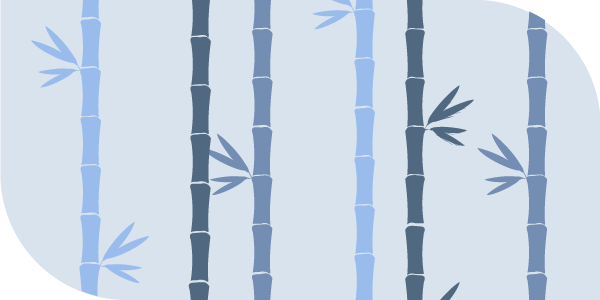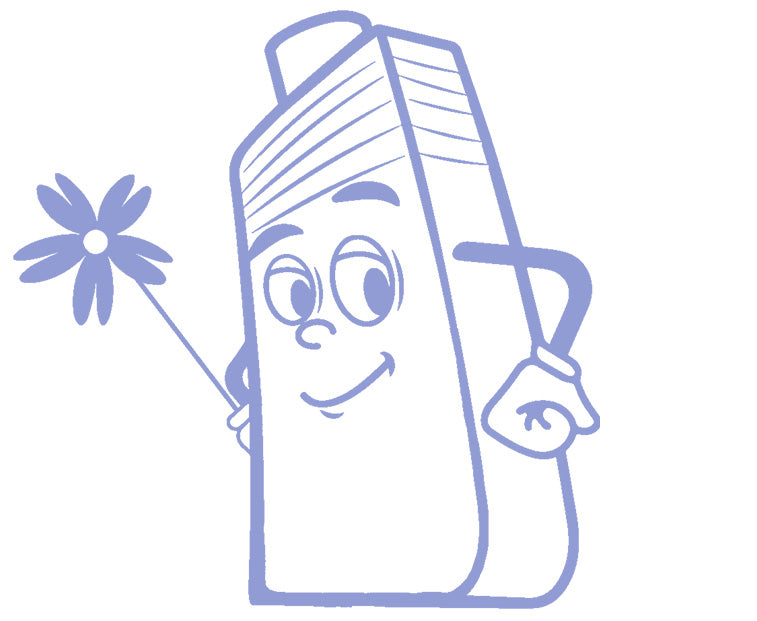Silk and bamboo bedding are the best choices for maintaining skin and hair health. But why? What makes them unique? I’ll walk you through some common types of bedsheets and break down the pros and cons of silk and bamboo bedding. I’ll also tell you which wins as the best bed sheets to choose.
Index
5 Common Types of Bedsheet Materials
1. Linen
Linen is a durable material produced from flax plant stems. Depending on the type of linen, it can have a rough texture and cause adverse effects on hair and skin.
2. Cotton
Cotton is one of the most popular materials for sheets and comes in several different forms. Cotton can absorb the oil and moisture from your skin and hair, leaving it dry or frizzy.
3. Polyester
Polyester is made from synthetic materials. It’s not very breathable, and it can irritate sensitive skin. Plus, it’s not a great option if you care about the environment.
4. Silk
Silk bedsheets, made from silkworms, are a softer alternative to cotton or polyester. Its smooth and luxurious material helps prevent friction-related damage.
5. Bamboo
Made from bamboo shoots, bamboo sheets are breathable, soft, and great for regulating temperature.
Why Choose Silk or Bamboo Sheets?

As opposed to other bedding materials, bamboo and silk bedsheets are:
Hypoallergenic
Bamboo and silk sheets are resistant to dust and mold; this helps prevent allergic reactions on skin.
Friction Reducing
Silk and bamboo sheets help reduce friction damage due to their soft and smooth textures.
Moisture Retaining
Silk and bamboo don’t pull moisture from your hair and skin like cotton can. They help your skin and hair retain moisture overnight, so you don't wake up feeling dry.
Breathable
Bamboo and silk bedsheets aren't woven as tight as other materials. This means they have better airflow.
Temperature Regulating
Both bamboo and silk bedding are cooling, which helps regulate body temperature. No more night sweats! On the other hand, they will also keep you warm on cold winter nights.
Luxurious
As opposed to cotton or polyester, bamboo and silk sheets are a more luxurious choice. They are both very sleek and soft, more sustainable, and often made with higher quality standards.
Wrinkle-Resistant
The fibers in silk and bamboo fabric are resistant to wrinkles, so there’s no need to iron or steam.
Durable
Bamboo and silk sheets are durable and long-lasting. The natural fibers in both are strong and can outlast other types of materials if cared for properly.
Antibacterial
Silk and bamboo sheets are antibacterial and antifungal. They are less likely to hold onto moisture, making them mildew-resistant.
Who Are Silk or Bamboo Bedsheets Good For?

While bamboo and silk bedding is suitable for everyone, some may benefit more. These people are:
Sensitive Skin Types
If you are prone to skin irritation, especially with polyester blends, bamboo and silk bedding may be the best for your skin.
Luxury Seekers
If you want bedding that feels and looks luxurious, silk and bamboo sheets are for you. They're soft, strong, and more skin and hair-safe than other materials. Bonus? Bamboo duvet covers don’t have the luxury price tag.
Hot Sleepers
Do you tend to get hot when you sleep? Have a hard time constantly tossing and turning to find the “cool” part of your sheets? Silk and bamboo bedsheets are perfect for you. They have great airflow and help with temperature regulation.
Allergy Prone
If you are sensitive to dust, mold, or mildew, you may want to ditch the cotton or polyester sheets. Silk and bamboo bedding are hypoallergenic, so they're allergy-friendly.
Frizzy, Dry, or Damaged Hair Types
Frizzy and dry hair can be tough to manage. Making the switch to silk or bamboo sheets might help. Since they don't absorb oils, silk and bamboo help retain moisture and reduce frizz.
For damaged hair, the soft texture will help give them a break from friction damage. If you’re looking for more ways to repair damaged hair, here’s a guide on how to stop hair from breaking off.
Curly Hair Types
Curly and coarse hair textures can be prone to frizz, breakage and moisture loss. Silk or bamboo duvet covers help you maintain your curls defined during the night, while keeping moisture locked in. That's also why silk hair bonnets are so popular among those with textured and curly hair! Want to know other hair care practices for curly hair? Here are the best products for curly hair types to use.
Dry Skin Types
Like the benefits for dry hair, silk and bamboo bedding are great options for those with dry skin. They help retain moisture in skin overnight.
How Are Silk Sheets Made?
Unlike other bedding materials made from plants, silk sheets are made from moths called silkworms. When silkworms form a cocoon to turn into a moth, they weave themselves together with a net of silk threads and gum produced from their body. Each silkworm can produce about one mile-long thread that wraps its body.
Once the silkworm is encased in the cocoon, a silkworm farmer will boil the silkworm to kill it and melt the gum around it. Then, they delicately unweave the raw silk strand. Once they collect around ten silk strands, they weave them together to create one strong thread.
There has been recent controversy in harvesting silk since it involves killing thousands of larvae to produce only a few threads. Organizations like PETA have urged consumers to not buy silk for this reason.
How Are Bamboo Bedsheets Made?

Unlike silk bedding, bamboo bedding is plant-based. Bamboo shoots are harvested, cut into strips, and crushed into a bamboo pulp. The bamboo is then submerged in a liquid, like sodium hydroxide, to help extract the bamboo cellulose.
Once the bamboo fibers are made, they can be spun into different types of bamboo fabric. There are five different forms of bamboo fabric:
1. Bamboo Viscose (or Bamboo Rayon)
Bamboo rayon and viscose are two forms of semi-synthetic bamboo. Viscose and rayon will sometimes be labeled interchangeably, depending on where it’s made.
Bamboo viscose and rayon are made by chemically treating bamboo cellulose with toxic chemicals, like carbon disulfide. Using these toxic chemicals creates carbon disulfide, a hazardous fume for humans.
2. Bamboo Modal
Bamboo modal is similarly made to bamboo viscose, with the addition of a stretching process. This helps make it more lightweight and soft.
3. Bamboo Lyocell
Bamboo lyocell is made from regenerated cellulose fiber, like bamboo viscose, but doesn’t involve using harmful chemicals. Bamboo lyocell is more eco-friendly since it doesn't require as much water and produces lower emissions.
4. Bamboo Linen
Bamboo linen is similar to regular linen with the same drawbacks. It tends to be coarse, scratchy, and unforgiving. It will also need to be ironed.
5. Bamboo Cotton Blend
Bamboo cotton blends mix around 60-70% bamboo rayon and 30-40% cotton. They're usually not as soft as other bamboo fabrics and are less sustainable.
Hairlust Silky Bamboo Duvet Covers and Flat Sheets are made from 100% Bamboo Lyocell®. Sustainable without compromising softness. It’s free from toxic chemicals, requires less energy and water to produce, and retains its super soft feel. They are also manufactured according to the OEKO-TEX Standard 100. These bamboo duvet covers come in 8 different colors so there is something for everyone!
Want a full bamboo bedding set? Try the matching Silky Bamboo Pillowcase! Are you curious about silk vs. bamboo pillowcases? Read this article on the differences and why bamboo pillowcases are better!
How Do You Wash Bamboo and Silk Bedding?

Bamboo bedding can usually be machine washed but skip the hot water and heavy cycles. The Silky Bamboo Duvet Covers are machine washable at 30 degrees using a gentle cycle.
Silk sheets often need hand washing or special cleaning. Certain brands may have machine wash-safe silk fabric that can be washed in cold water on a low cycle. They generally cannot be combined in a load with other items. However, for 100% silk bedding, you may need to hand wash in a bathtub or basin to protect the silk from damage.
Pros and Cons of Silk and Bamboo Bedsheets
Bamboo and silk duvet covers have similar benefits, but what makes them different? Here are some pros and cons of bamboo vs. silk duvet covers:
Pros of Silk Sheets
- Luxurious - Silk bedding is a much longer established luxury bedding material. Silk duvet covers have been used as a status symbol throughout history, and bamboo bedding is still relatively new.
Cons of Silk Sheets
- Expensive - Due to the harvesting process, silk duvet covers have a higher price tag.
- Delicate – Silk is one of the most delicate fabrics. It can stain easily and can be damaged by high and low temperatures.
- Hard to wash – Silk duvet covers are often hand-wash only. Silk is susceptible to damage, so, depending on the brand, it may not be able to go into your washing machine.
- Tears easily – Did I mention it’s delicate? Silk can tear easily, and it’s hard to repair.
- Can fade fast – Silk duvet covers can lose their luster when exposed to high heat. It can be impossible to bring back that shine once it’s gone.
Pros of Bamboo Sheets
- Animal friendly - Since bamboo duvet covers are plant-based, animals aren’t harmed in the process.
- Easy to wash – Bamboo bedding doesn’t need to be hand washed. It can go into your washing machines!
- Affordable luxury – Bamboo sheets are more expensive than commodity fabrics like cotton, but not as expensive as silk.
- Durable – Bamboo duvet covers can outlast delicate silk.
Cons of Bamboo Sheets
- A little less smooth – Compared to silk sheets bamboo is not quite as sleek. But it comes very close! Besides, some people might find silk sheets even too slippery.
Conclusion: Bamboo Is Better Than Silk Bedding
Bamboo bedding is a better alternative to silk duvet covers. While both fabrics have similar advantages, bamboo wins over silk in a few categories.
Bamboo, over silk, is:
- Machine washable
- More affordable
- Vegan and cruelty-free
- More durable
However, I recommend paying attention to what kind of bamboo fabric is used, like mentioned above. 100% Bamboo Lyocell is definitely the smoothest and most sustainable type of bamboo.
Other Bamboo Hair Products
- Bamboo Towel Pillowcase - This is perfect for protecting your pillow while sleeping with wet hair.
- Bamboo Hair Towel Wrap - Your hair is extra delicate when wet, so opting for bamboo hair towel instead of a full cotton towel will give your hair some gentle drying.
- Bamboo Hair Brushes - Bamboo brushes are gentle on your hair and better for the environment. Choose between a Styling Brush, Vented Brush, Defining Brush, Paddle Brush, or wide-toothed Bamboo Comb depending on your hair type and needs.
- Hair Supplements - Try hair supplements rich in bamboo extract to aid with healthy hair growth. Hairlust’s Hair Formula Gummies and Hair Formula Tablets have biotin and zinc, which help maintain healthy hair.
I hope this article has provided some insight into bamboo vs. silk bedding. I hope I have convinced you to give bamboo duvet covers a try!


































































